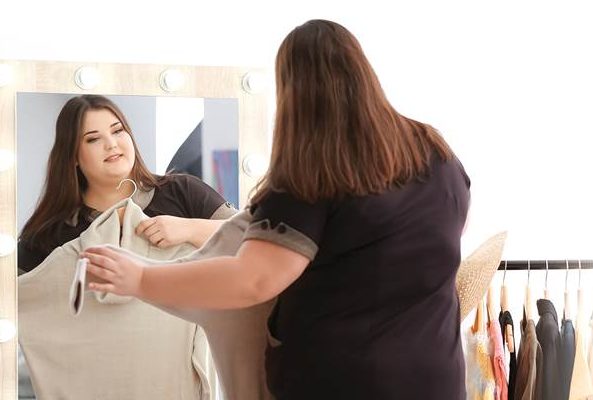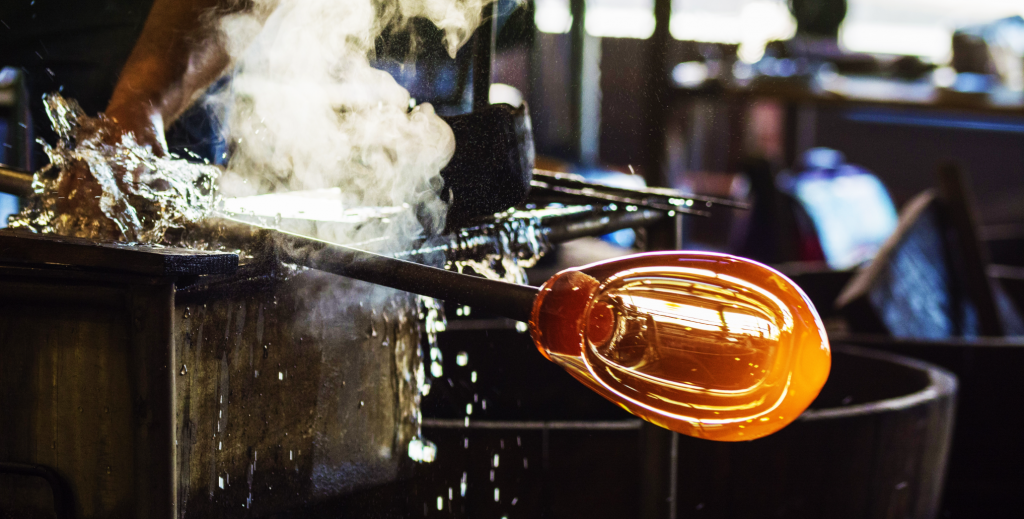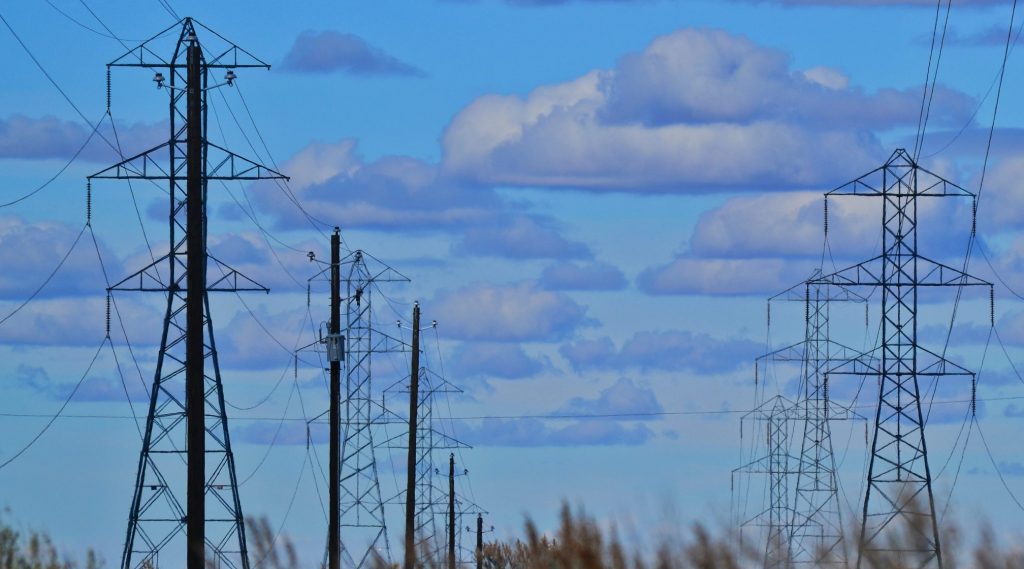“I want my 7-year-old daughter to look up to me and know that regardless of her number on the scale, she will still be beautiful,” says Hala Hassan, a former sales executive at a hotel booking agency for expos in the United States and Europe.
Hassan, 27, lost her job in June due to the pandemic, paving the way for her ultimate passion: an online size-inclusive clothing business. “I aim to meet the needs of all plus-size girls and women in Egypt, for my platform to feel like a home for them,” Hassan says. “Most importantly, to keep them on track with what is trendy so they are never left out.”
The global body positivity movement is influencing how industries create, market, and sell products, as well as how people view themselves and others, she says.
About 80 percent of U.S. women don’t like how they look, according to Psych Central, a mental health information and news website. In the U.K., one in five adults has felt body shame in the past year, says the Mental Health Foundation.
Ordered for you
Some of the biggest contributors to low self-esteem are media outlets and the fashion industry, says Hassan. “When companies and brands market their products with a certain type of model, it’s almost as if they’re telling people who don’t have a certain body type that they’re not good enough.”
Hassan’s online page, Queen J, offers clothes as large as U.S. size 26. The page has nearly 20,000 followers and receives 30-50 orders per month. In the United States, 67 percent of women are size 14 or above, according to Plunkett Research.
In Egypt, body positivity has yet to take off, says Hassan, adding that 2020 was the year she started to see young Egyptian plus-size bloggers gain some traction on social media. Yet she notes their accounts and pictures still draw criticism and insults.
A few Egyptian factories recently added large sizes to their lines, but Hassan says they are neither true to size nor fashionable. A proper basic shirt for a plus-size person needs at least a meter and a half of fabric, though some manufacturers insist on using just one meter, hoping that added lycra will stretch enough to fit a person weighing 120 kilograms (265 pounds). “They think it’s not a solid business decision to put that much fabric in one item. They disregard the fact that lycra is not chic and does not embrace the bodies of plus-size women,” she explains.
Hassan has been in contact with five factories in Helwan, with only one of them delivering her designs true to size.
As a result, her online page still focuses on imported U.S. brands to stand out from other online sellers with clothing from China. “U.S. clothes are the most durable for plus sizes and have a longer shelf life. Not to mention the designs and options are endless.”
Hassan’s main business hurdles are pricing and regulations. “It’s a real pain,” she says. A buyer typically would multiply the price in dollars by EGP 16 then add on customs, “which is always a surprise,” according to Hassan. “You never really know the exact percentage. Many times I’ve had to pay customs out of my own pocket. I can’t tell the customer this T-shirt is EGP 300, then when it arrives say it’s EGP 400 just because customs were higher than I expected.”
Another challenge is related to regulations of the maximum dimension and weight of imported items. In the winter season, for example, it’s impossible for Hassan to import heavy jackets. “I would risk not receiving the shipment.”
A further challenge and probably the most difficult to overcome is trying to break down the stereotypes of plus size fashion in Egypt. Hassan cited a few positive achievements since the launch of her online business earlier this year.
“I had a few customers always wanting black clothing. One day I asked them why black? They spoke deeply about how they always want to hide and have people never looking at them. Or how they are insecure about specific body parts,” she recalls.
All Hassan told them was “colors never hide if you are fat or not. You’re still fat in black, so you might as well get a color you actually love.” Most of them ended up buying a bright highlighter pink oversized sweater. “I can proudly say,” she says, “none of them regretted it.”
Hassan plans to hire seamstresses and buy fabric in bulk from India. “This way I will be giving women job opportunities and be able to carefully monitor the process with a variety of affordable fabric,” she says.

What women want
One of the most authentic voices in Egypt’s body positivity movement is Noura Galal, 29, founder of Rafeya, a social enterprise that aims to use fashion to empower women in the workforce.
Her job at the alternative nonprofit Educate-Me exposed Galal to the continuous repression of women in the informal areas in which she worked. As an operations manager, she came in contact with women from Konayessa, an area of South Sinai. According to Galal, many women living in extreme poverty face daily abuse from spouses, both physical and emotional. And they had strong sewing skills.
Determined to empower these women, Galal established Rafeya in 2014. Rafeya is a clothing line that produces clothes for women of all body types. Sold exclusively online, it targets the middle class and has 35,000 followers.
“I believe we all deserve to feel happy about ourselves and how we look, as I firmly believe that if we do not love ourselves, it will be hard to believe others love us and love how we look,” she says.
Growing up, Galal struggled to find clothes that were stylish and made her love herself, she says, adding, “There is a growing awareness of the role the fashion industry plays in how women and girls see themselves.”
Rafeya can tailor every piece of clothing so customers feel comfortable whatever their size or body shape, says Galal, adding that fashion has a role in spreading positive messages about diversity and should promote self-acceptance.
“We can’t force all women into one size chart and we believe it is not only about plus-sizes, it is all about traits neglected by the fashion industry for so long, for example tall or short girls or veiled girls,” she adds.
Even though Rafeya established and owns a licensed factory, Galal mentions her biggest challenge is fast-fashion Egyptian brands. Rafeya also does work for other brands, an average of 50 orders per month.
Galal also must contend with misconceptions about plus-size fashion. “Growing up, we’ve all heard of something along the lines of ‘you need to wear darker colors to look thinner, white will make you look fat, don’t wear bright colors, plus-size is not fashionable, women with curvy and fuller body shapes need to hide behind loose garments.’”
She is optimistic her company is slowly raising awareness that all women are beautiful, regardless of their style and size. “We always try to include in our photoshoots diverse body shapes and different styles,” she says. “We want every woman who sees our brand and visits our website to relate to the models.”
Last month, Rafeya launched its first customizable loungewear line. Galal aims to expand to swimsuits, as well as collections catered toward young girls.

Eye on the movement
Research shows the 1990s as a decade when body positivity rhetoric subtly emerged. It was a time that prioritized giving people of all sizes a place where they could comfortably come together and exercise. Programs were being developed for overweight people. A popular program at the time, “Making Waves” was a weekly swim for overweight people, according to a paper titled “Fat Activism” published by the University of Limerick in 2008. “Home exercise programs like Genia Pauli Haddon and Linda DeMarco’s home exercise video series ‘Yoga for Round Bodies’ were also put together for those who were not comfortable joining a wellness community,” according to the paper.
Since 2012 and the launch of social media platforms, the movement has had a heightened presence against unrealistic standards of feminine beauty, according to “The Commodification of the Body Positive Movement on Instagram,” a book by Jessica Cwynar-Horta. Model and feminist Tess Holliday founded @EffYourBeautyStandards, which brought a spate of support to the body-positive movement. Holliday was signed by Milk Management, a large model agency in Europe, as its first model over a size 20 (she is a 26), Cwynar-Horta notes. “Instagram has been utilized as an advertising platform for the movement. Pioneers connect with brands and advertisers,” she says.
In 2016 Mattel released a new line of Barbie dolls under the name “Fashionistas” with three body shapes, seven skin colors, 22 eye colors and 24 hairstyles to be more inclusive, says Grace Gouglass in a paper published at Ball State University in 2018.
Moreover, ASOS and other big brands are promising to not retouch images, according to their websites. It is leading the way in the industry as others follow suit. American Eagle’s Aerie brand launched in 2014 with an ethos centered on body positivity and inclusion. Its “Real” marketing campaign features models that are not beautified by the airbrushing techniques used by other companies that prefer to promote their clothing through “perfect” bodies. Aerie states part of its mission is to empower all women to love their real selves. In 2019, sales for Aerie were up 20 percent and the brand has delivered 21 straight quarters of double-digit growth, according to a company statement.
Nike’s flagship London store introduced plus-size mannequins, signaling a further step toward inclusivity, CNN reported in 2019. “The sportswear brand follows retailers including Old Navy and Nordstrom, as well as U.K. department store Debenhams, in displaying size-inclusive mannequins.” Nike also released a women’s plus-size range, offering sizes from 1X to 3X, with a campaign featuring model Paloma Elsesser, influencers Grace Victory and Danielle Vanier, and hammer thrower Amanda Bingson.
Today, there are more than 10 million #BodyPositive posts on Instagram. The concept is championed by everyone from Hollywood celebrities to reality TV stars and the wider online community. It represents a welcome change.







